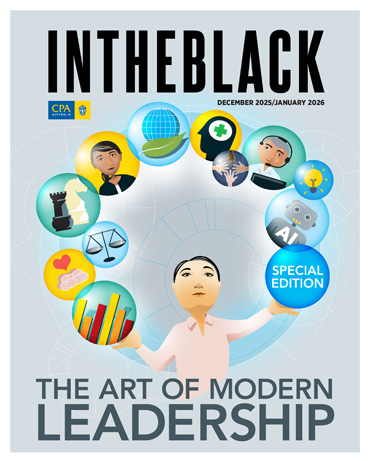Loading component...
At a glance
The concept of materiality is central to financial reporting, but the idea of what is material and how it should be applied is continually evolving.
In financial reporting, the International Accounting Standards Board states that “information is material if omitting, misstating or obscuring it could reasonably be expected to influence the decisions that the primary users of general purpose financial statements make on the basis of those financial statements”.
The concept of sustainability materiality has had a major impact on organisations since its inclusion in the guidelines of the Global Reporting Initiative (GRI) in 2000.
Today, finance teams — often working with sustainability teams — are complying with expanded reporting obligations, including a broad range of non-financial factors. There have also been changes in the way materiality is applied beyond reporting and disclosure.
In many mature organisations, chief executives and boards use materiality insights to understand risk in a more strategic way, including how climate issues impact business.
With regulators, investors and other stakeholders all demanding a wider view of factors driving materiality, the idea of what is “decision useful” has become more nuanced and complex, with varied applications across sustainability, financial reporting, and audit and assurance.
The evolution of materiality
Donato Calace, who holds a PhD in corporate sustainability, has followed the development of materiality in accounting closely.
As senior vice president of partnerships and innovation at ESG analytics provider Datamaran, Calace notes that the GRI and subsequent initiatives in sustainability have used accounting language and concepts such as materiality as a “trojan horse” in order to be taken seriously by the business world.
“There are some key differences in how materiality has evolved, and one of those differences is that in conventional accounting, materiality is a threshold for financial reporting — it is not used to set any kind of strategy or risk management,” he says.
“It is something for auditors, not the board of the company. But with issues of sustainability, it is broader than the threshold for reporting — it defines a corporate governance framework.”
Calace believes this idea — that materiality is more than a threshold which needs to be reported to auditors and extends to corporate responsibility — has been the “biggest challenge in materiality over the last 25 years”.
Double vs dynamic materiality
Double materiality happens when factors impact on a company’s financial position (financial materiality) and broader societal and environmental outcomes (impact materiality).
Dynamic materiality recognises that the impact of a particular factor can change over time; therefore, what might be immaterial today could be material in future.
In contrast to the conventional view, which is that materiality is fixed at a point in time, a dynamic view acknowledges that changing market trends, regulatory frameworks and stakeholder expectations can change the materiality of particular issues.
Materiality mapping
At ratings and research agency S&P Global, the approach is to take ESG materiality and look at it in two dimensions: stakeholder materiality and financial materiality.
S&P advocates a process of “materiality mapping”, which evaluates how these two dimensions interact, and notes the different impacts in different sectors.
Consider the impact of pollution in the mining sector. A tailings dam, which is an embankment constructed near a mine to store mining waste, creates a risk of contamination that could adversely impact the surrounding community and environment.
S&P’s mapping approach considers the financial impact of the cost of disasters but also factors in reputational consequences and the loss of a social licence which could, in extreme cases, lead to mine operations being paused or stopped.
Materiality in three segments
CPA Australia’s ESG lead, Patrick Viljoen, says that by using the term “materiality” to define different ideas, the accountancy profession “has done itself no favours”.
Viljoen looks at materiality in three segments: the day-to-day business operations — the “strategic deployment of a value proposition” — that also considers risk, external reporting that encompasses both financial and sustainability reporting, and audit and assurance.
Materiality in business operations drives decision-making, with risks factored in.
In terms of external reporting, compliance is a major factor. Information around sustainability must be disclosed and omission can adversely impact engagement and decisions by stakeholders.
Viljoen draws a distinction between “implied” materiality, which is complying with mandatory climate impact reporting standards currently being rolled out in Australia, and “assessed” materiality, which refers more specifically to the broader sustainability-related risks an organisation is facing.
For some organisations, he says, climate may not be the main sustainability topic they need to address. For example, an organisation may be more focused on social impact.
While compliance may require specific reporting, there are other factors that might be more material.
Integrated thinking is key
In addressing materiality, Viljoen notes that integrated thinking is key. Sustainability is only one risk within a broader set of risks. Applying a sustainability lens in isolation might deliver one decision, but when factored into wider strategic issues facing a business, the decision might be different.
Viljoen says that while definitions and standards are clear about what is required in reporting and auditing and assurance, the “missing piece” is a wider conversation around sustainability.
When an auditor asks a financial accountant for information, there is an “embedded understanding” that is based on years of practice.
It is complicated when sustainability is added “on top of that”, because [the response] can depend on who is doing the reporting. How CFOs and their finance and sustainability teams determine materiality levels are often different.
“Nirvana” is when that friction is removed and auditors, finance and sustainability teams have a comprehensive and shared understanding of the use of materiality, Viljoen says.
While this may be a long-term goal, perspectives are aligning in many leading organisations. Together, a common understanding can drive clarity and aligned action, and make materiality more strategic — rather than an exercise in reporting compliance.

